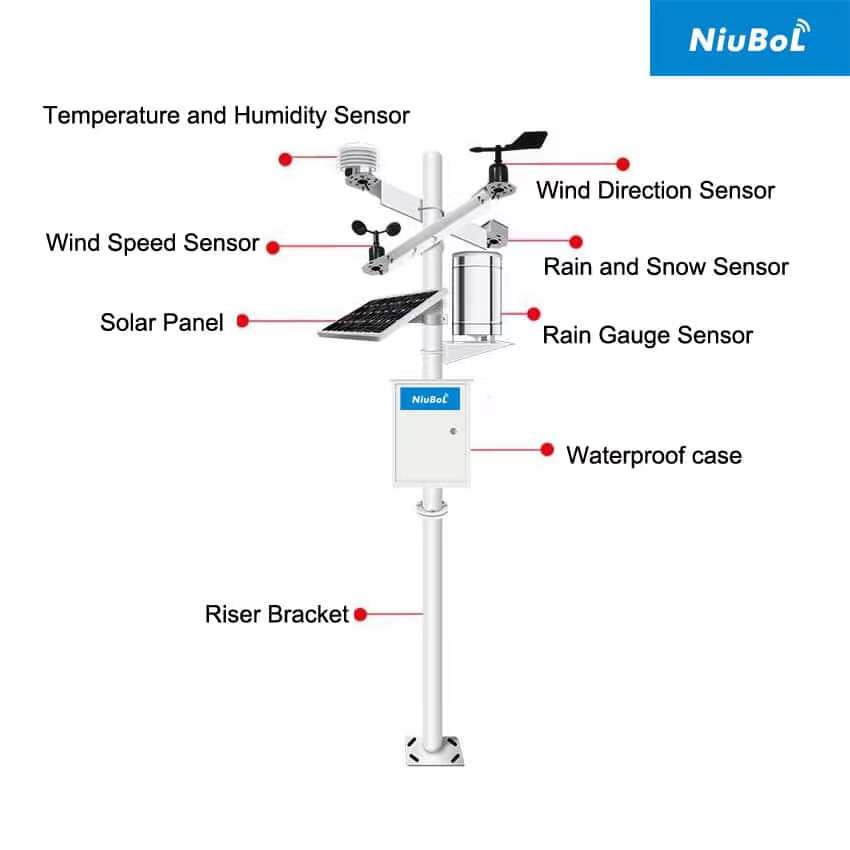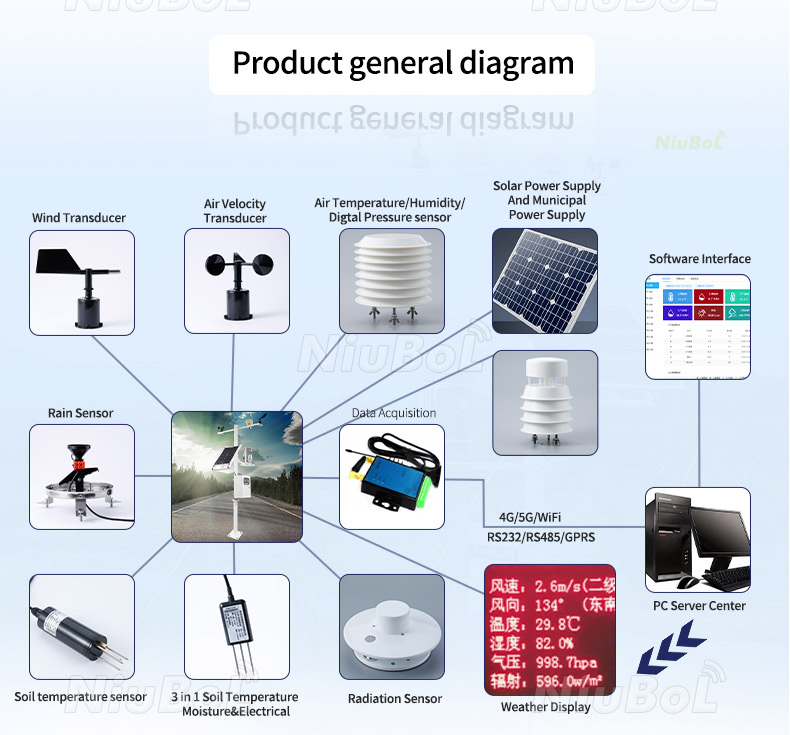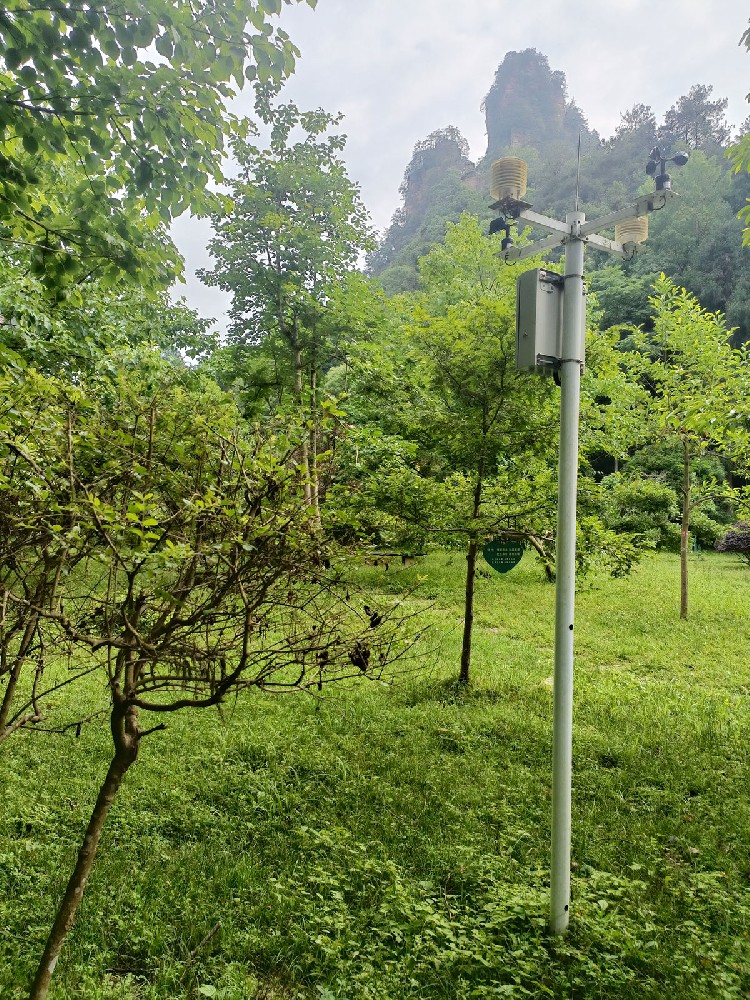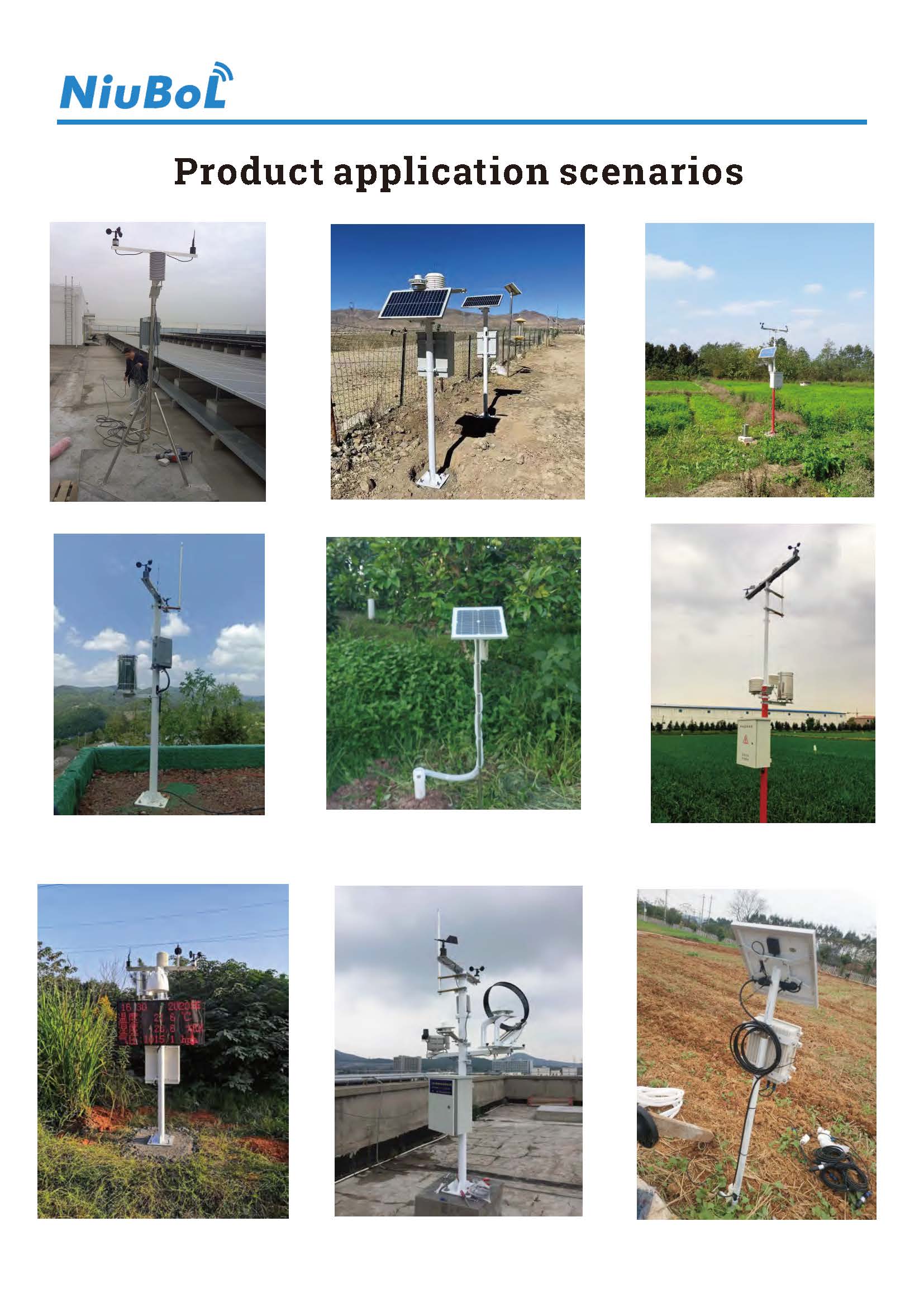

— Blogs —
—Products—
 Consumer hotline +8618073152920
Consumer hotline +8618073152920 WhatsApp:+8615367865107
Address:Room 102, District D, Houhu Industrial Park, Yuelu District, Changsha City, Hunan Province, China
Time:2025-10-18 10:14:58 Popularity:369
Authoritative Answers: Top 10 Core Questions and Selection Strategies Most Concerned by Weather Station Users
Weather stations serve as the "nerve center" of environmental perception, playing a core role in wind energy assessment, solar power generation, building safety, hydrological warnings, precision agriculture, and scientific monitoring.
However, the stability and accuracy of a weather station depend not only on the performance of individual sensors but also on the overall system architecture design, installation standards, and maintenance framework. In the context of global climate change and digital transformation, selecting a long-term reliable, data-consistent meteorological monitoring system is not just a technical decision but a strategic investment.
With industrial-grade sensor technology and international standard experience, NiuBoL has summarized the 10 most critical questions and professional answers for deploying and operating weather stations.

The installation location must be open and flat, with no obstacles within a radius 10 times the sensor installation height.
Installing anemometers at 10 meters height is the World Meteorological Organization (WMO) recommended standard, ensuring data comparability worldwide and excluding the influence of surface roughness and local turbulence on measurements.
✅ Pro Tip: In urban or mountainous environments, use towers or extension arms to elevate anemometers to restore standard conditions.
The accuracy of meteorological sensors gradually drifts over time and due to environmental factors.
- Temperature and humidity, barometric pressure sensors: Recommend traceable calibration to national metrology standards every 12–24 months.
- Radiation sensors (solar intensity): Due to easy contamination and significant drift in optical components, annual comparison calibration is advised.
- Anemometers and rain gauges: Primarily involve functional checks and mechanical coefficient verification.
✅ For high-precision research or climate projects, establish an annual comparison system and retain original calibration data.
The three core elements of data accuracy:
- High-Quality Sensors: Select industrial-grade digital sensors compliant with ISO/WMO standards.
- Scientific Installation Layout: Avoid obstructions or interference from brackets, solar panels, or other structures on sensors.
- Digital Signal Transmission: Prioritize RS485/SDI-12 digital outputs to prevent attenuation and noise interference over long distances.
✅ All NiuBoL meteorological sensors feature digital outputs supporting Modbus communication protocols, ensuring long-term high-consistency data.
In cold or snowy regions, always choose wind speed and direction sensors with automatic heating functions.
When temperatures drop below freezing, the heating elements activate automatically to prevent ice buildup on wind cups or ultrasonic probes.
The power supply system is the "lifeline" of the weather station.
Reliability depends on sensor power consumption, battery capacity, controller standby power, and local solar irradiance.
In professional assessments, calculate "autonomy days" (days of continuous operation without sunlight).
NiuBoL systems are designed to:
Maintain stable operation for 7 to 10 days under continuous cloudy/rainy or extreme weather conditions, ensuring uninterrupted data.

Follow the "three-layer method" for fault diagnosis:
- Physical Layer: Check for loose or water-damaged power supplies, cables, and connectors.
- Protocol Layer: Use debugging tools to verify Modbus/SDI-12 data frame integrity and address conflicts.
- Network Layer: Inspect 4G/5G/WiFi signal strength, SIM card data usage, and server connection status.
| Application Scenario | Recommended Interval | Description |
| Climate Monitoring | 1 hour | For statistical long-term average trends |
| Engineering Safety | 1–10 seconds | To capture gusts and instantaneous changes |
| Precision Agriculture | 5 minutes | Sufficient to reflect temperature and humidity variations |
✅ For solar-powered systems, balance data resolution with power consumption to avoid reduced endurance from overly high frequencies.
Modern weather stations must support multi-protocol interoperability:
- Wired Interfaces: RS485 (Modbus RTU/TCP) for industrial automation systems.
- Low-Power Interfaces: SDI-12 for agriculture and environmental monitoring.
- Wireless/Cloud Interfaces: 4G, WiFi, LoRa, MQTT for seamless connection to SCADA or enterprise cloud platforms.
✅ NiuBoL Cloud offers open APIs for quick integration with mainstream systems like SCADA, AWS IoT, and ThingsBoard.
Metal Enclosures (Anodized Aluminum/Stainless Steel):
- Strong corrosion resistance, suitable for coastal, high-salt fog, or dusty areas.
- High mechanical strength with superior electromagnetic interference resistance.
- The preferred choice for high-end industrial projects.
Engineering Plastic Enclosures (ASA/PC):
- Lightweight and lower cost.
- Ideal for temperate agriculture or portable monitoring applications.
✅ NiuBoL offers dual versions: Lightweight plastic shell models and industrial metal versions to meet different budgets and scenarios.

High-quality industrial weather stations typically last 5–10 years or more.
Key influencing factors include:
- Anemometer bearing wear life;
- Circuit waterproof sealing rating (IP65–IP68);
- Lightning protection and electromagnetic interference resistance design.

Precise, reliable, and integrable—these are NiuBoL's brand genes.
We not only provide high-precision, high-protection-grade weather station equipment but also:
- Standard installation guidance
- Full-lifecycle technical support
- Cloud-based data visualization and API integration solutions
From the first day of deployment, you'll gain the most accurate and trustworthy environmental data. NiuBoL Weather Stations: Making Every Measurement Worth Trusting.
Related recommendations
Sensors & Weather Stations Catalog
Agriculture Sensors and Weather Stations Catalog-NiuBoL.pdf
Weather Stations Catalog-NiuBoL.pdf
Related products
 Combined air temperature and relative humidity sensor
Combined air temperature and relative humidity sensor Soil Moisture Temperature sensor for irrigation
Soil Moisture Temperature sensor for irrigation Soil pH sensor RS485 soil Testing instrument soil ph meter for agriculture
Soil pH sensor RS485 soil Testing instrument soil ph meter for agriculture Wind Speed sensor Output Modbus/RS485/Analog/0-5V/4-20mA
Wind Speed sensor Output Modbus/RS485/Analog/0-5V/4-20mA Tipping bucket rain gauge for weather monitoring auto rainfall sensor RS485/Outdoor/stainless steel
Tipping bucket rain gauge for weather monitoring auto rainfall sensor RS485/Outdoor/stainless steel Pyranometer Solar Radiation Sensor 4-20mA/RS485
Pyranometer Solar Radiation Sensor 4-20mA/RS485
Screenshot, WhatsApp to identify the QR code
WhatsApp number:+8615367865107
(Click on WhatsApp to copy and add friends)
